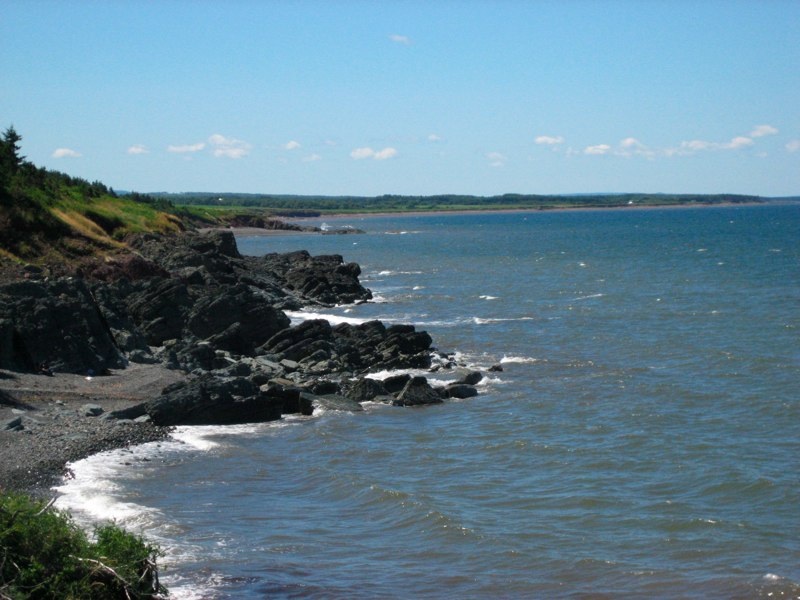 The
Arisaig Group of the Avalon Terrane of northeastern Nova Scotia consists of
The
Arisaig Group of the Avalon Terrane of northeastern Nova Scotia consists of
approximately 1500-17500 meters of strata exposed vertically. Outcrops representing
continuous sedimentation almost throughout the entire Silurian and into the Early
Devonian are well exposed along the coast of the Northumberland Straight, as well as in the Antigonish Highlands. The eight formations of the Arisaig Group were deposited in an intercontinental basin and are made up mostly of marine mudstones, shales, and massive siltstones with some brief periods of terrestrial sedimentation.
K-bentonites, a deposit derived from volcanic ashes that settle through sea water, are
interbedded with the marine sediments in four formations of the Arisaig Group. The
tectonic events controlling subsidence of the basin may be associated with the docking of Avalonia to Laurentia. The bentonites found throughout the basin indicate nearby
volcanism, which could also be a result of the same continental convergence. Geochemical analyses of bulk ash composition and of individual barite and sphalerite minerals extracted from these volcanic deposits shed light on the details of the paleotectonic setting and history of the basin.